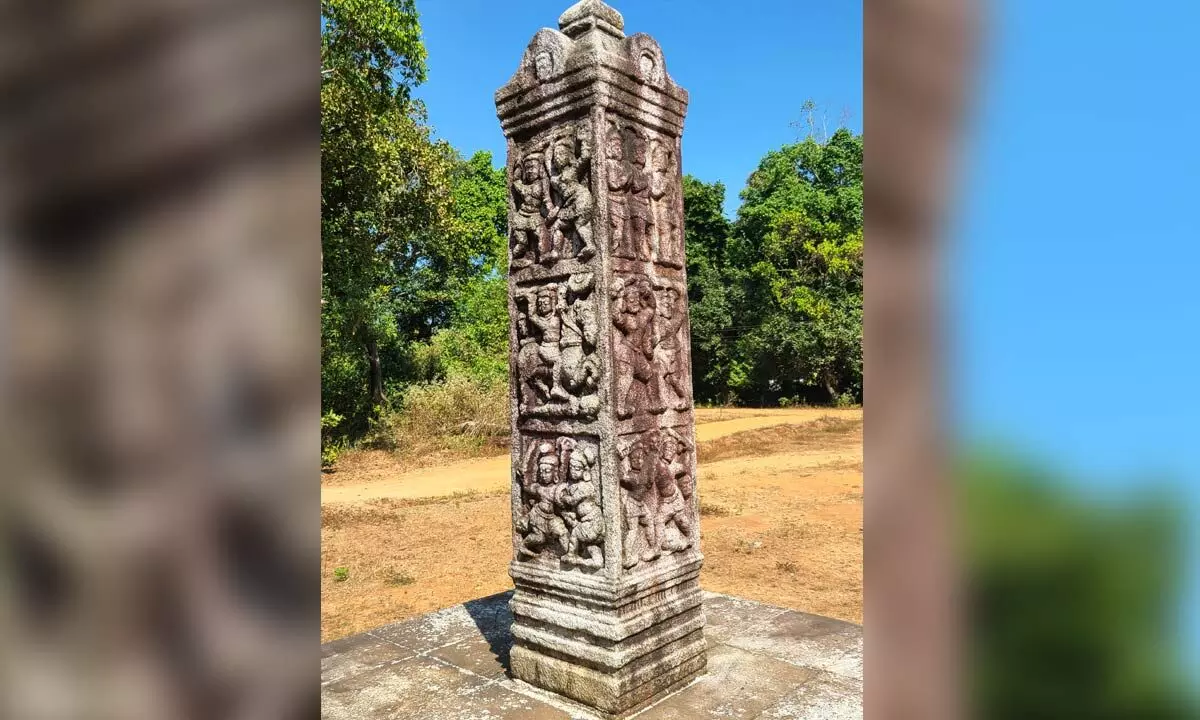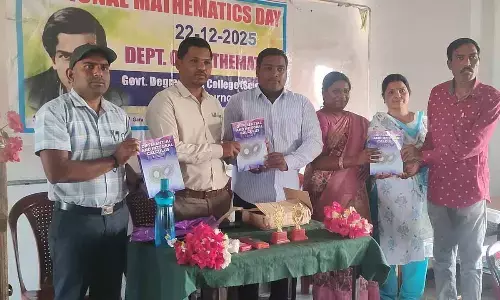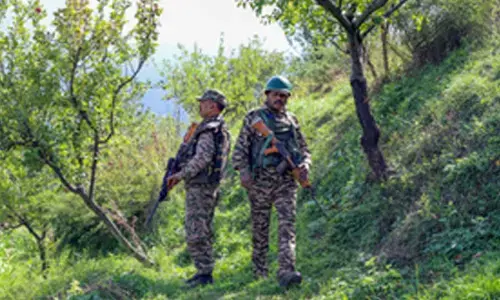Archaeological find, Veera Sthamba sheds new light on history

A unique Veera Sthamba, or "pillar of Hero," has been discovered in front of the Nandikeshwara temple at Chitteri in Ulturu Mudubettu village, Kundapura taluk, Udupi district. Standing at a height of approximately 6 feet, the pillar has four faces, each adorned with three panels depicting war scenes, each measuring about 2 feet in length and featuring intricate carvings
Mangaluru: A unique Veera Sthamba, or "pillar of Hero," has been discovered in front of the Nandikeshwara temple at Chitteri in Ulturu Mudubettu village, Kundapura taluk, Udupi district. Standing at a height of approximately 6 feet, the pillar has four faces, each adorned with three panels depicting war scenes, each measuring about 2 feet in length and featuring intricate carvings. The Veera Sthamba is an exceptionally rare type of Hero-Stone, sparsely found in India, as noted by Prof. T. Murugeshi (Rtd), Associate Professor in Ancient History and Archaeology at MSRS College, Shirva.
On the eastern face's lower panel, a hero is depicted in an attacking position, with the rider on a horse cut into two pieces. The second panel portrays a hero riding a war elephant, holding an Ankush in his right hand, while the top panel illustrates the clash of two heroes with sword and shield, with a fallen hero at the centre.
The panels on the western face depict sword fighting, horse combat with a lance, and, at the top, another sword fight between two heroes. The southern panels showcase sword fighting with a torso and detached head in the lower one, sword fighting in the second, and three heroes standing side by side at the top, two of them holding swords in their left hand, and the third folding his palms in a posture of respect.
The northern face's lower panel depicts two apsaras descending from heaven, holding the shoulders of a deceased hero, while the second panel shows the apsaras locking the shoulders and legs of the hero, indicating their upward journey to heaven. At the top, the deceased hero is shown sitting in front of a Shivalingam. Similar Veera Sthambas have been found at Kudlu in Kasaragodu and Ammunje in Mangalore.
The Veera Sthambha holds historical significance as the erection of such pillars was an uncommon practice. While hero stones were commonly erected to honour the deceased, a pillar indicated a higher rank for the hero, potentially above that of a common soldier. Stylistically, the Veera Sthambha is believed to date back to the early 14th century. It is revered as a Kshetrapala stone by the local community and was brought to light through a recent archaeological exploration around Gulladi, conducted at the request of Dr. Raghuram Shetty Gulladi, hereditary trustee of Nandikeshwara temple. The exploration was carried out with the cooperation of Sri M. Rajiv Shetty, Jayasheel Shetty, Ramesh Shetty, Pradeep Basrur, and the students.


















